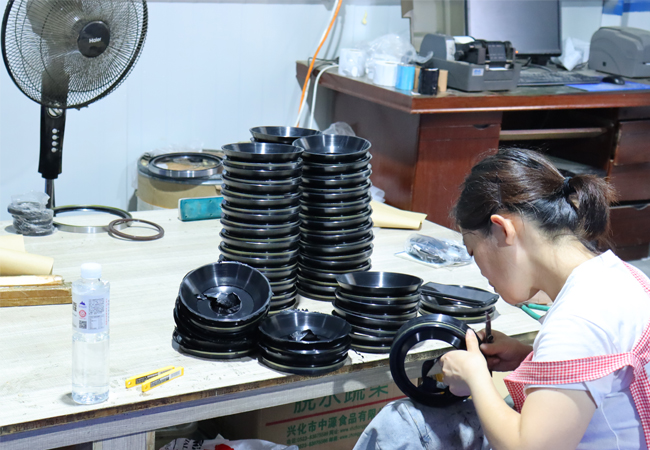Sep . 09, 2024 00:25 Back to list
hydraulic cylinder wiper seal
Hydraulic Cylinder Wiper Seals A Comprehensive Guide
Hydraulic systems are integral to various industries, providing powerful and efficient motion control solutions. At the heart of these systems lie hydraulic cylinders, which rely on an array of seals to maintain performance and functionality. Among these, the wiper seal plays a crucial role in protecting hydraulic cylinders from contamination and reducing wear, thus extending the life of the equipment.
What is a Hydraulic Cylinder Wiper Seal?
A wiper seal, also known as a dust seal, is designed to keep dirt, dust, and other contaminants from entering the hydraulic cylinder. Its position is typically located at the outer end of the hydraulic cylinder, where it acts as a barrier against external debris. By performing this protective function, wiper seals enhance the reliability of hydraulic systems and help prevent costly repairs associated with contamination.
Importance of Wiper Seals
1. Contamination Prevention The primary function of the wiper seal is to prevent foreign particles from entering the working chamber of the hydraulic cylinder. Contaminants can lead to premature wear of internal components and compromise the system's performance.
2. Enhanced Performance A clean hydraulic system operates more efficiently. By keeping the cylinder free from dirt, wiper seals ensure smooth operation of the piston and other moving parts, which leads to improved response times and overall performance.
3. Extended Service Life By protecting hydraulic cylinders from contaminants, wiper seals contribute to longer service intervals and reduced downtime. This not only saves costs associated with repairs and replacements but also increases productivity in operations that depend on hydraulic machinery.
Types of Wiper Seals
hydraulic cylinder wiper seal

Wiper seals come in various designs and materials, each tailored to specific applications and operational environments. Common materials include polyurethane, rubber, and thermoplastic elastomers, which offer different levels of resistance to temperature, chemicals, and wear. The choice of material and design depends on the specific requirements of the hydraulic application, such as the working pressure, exposure to harsh conditions, and the type of fluid used.
1. Single Lip Wiper Seals These are the most common type of wipers, featuring a single lip that seals against the cylinder rod. They are easy to install and provide effective protection against dust and debris.
2. Double Lip Wiper Seals Offering enhanced protection, double lip wipers have an additional sealing lip that acts as a secondary barrier against contaminants. This makes them suitable for more demanding environments where exposure to dirt is higher.
3. U-Cup Wipers These wipers feature a U-shaped design and are often used in larger hydraulic applications. They provide excellent sealing performance and can withstand high pressures.
Maintenance and Replacement
Regular inspection of wiper seals is essential to ensure their effectiveness. Signs of wear, such as cracks, tears, or hardening, indicate that a replacement is necessary. Timely replacement of worn wiper seals can prevent contamination issues and maintain the efficiency of the hydraulic system.
Conclusion
In summary, hydraulic cylinder wiper seals are a vital component in the performance and longevity of hydraulic systems. By preventing contamination and ensuring smooth operation, they play a significant role in reducing maintenance costs and enhancing overall efficiency. Choosing the right type of wiper seal for your hydraulic application is key to maximizing the functionality and lifespan of your hydraulic cylinders. Regular maintenance and timely replacements will help keep your hydraulic systems running smoothly for years to come.
-
Wiper Oil Seal: Our Commitment to Clean Hydraulics
NewsAug.13,2025
-
Hydraulic Oil Seal for Self Discharging Cars
NewsAug.13,2025
-
Hub Oil Seal for Agricultural Tractor Hubs
NewsAug.13,2025
-
Skeleton Oil Seal with NBR Material
NewsAug.13,2025
-
Rotary Lip Seal for High Pressure Applications
NewsAug.13,2025
-
Cylinder Seal Kits Our Legacy of Hydraulic Trust
NewsAug.13,2025
-
Unlocking the Potential of Hydraulic Systems with Essential Sealing Solutions
NewsAug.06,2025
Products categories
















